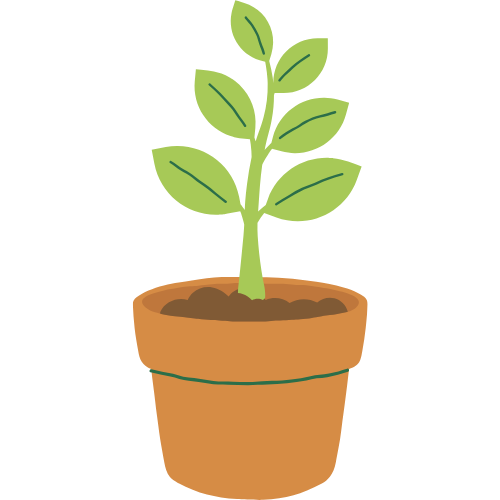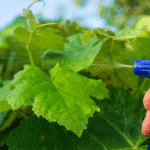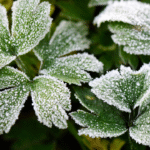It is the dream of many people to have a garden that displays color throughout the year, but, in some cases, year-round color does not mean an ongoing beautification by a garden plant. Rather, it is done through selective coordination of various plants in terms of offering some form of interest (flowers, foliage, berries or even interesting bark) during different seasons.
This is a guide to planting outdoor color on a continuity basis broken down according to what they have to offer and when the color can be expected:
1. The Mainstay Evergreen Shrubs and Trees
Those will be your staples of year round color. Salvia have consistent foliage that brings structure and greenery during the periods when other plants are not green. Many of them also supply seasonal flowers or berries.
- Key Players:
- Boxwood (Buxus): It has received its classic reputation because it has dense and small green leaves. Good in formal hedges or low borders, where a year round green is wanted.
- Holly (Ilex): There are hollies of all sizes, including small inkberry hollies. They produce shiny green leaves (with variegated available), with (in female plants) a glowing red, orange, or black Berry that is long-lasting on a shelf, through the winter season with pollination.
- Rhododendron and Azalea: These are broad leaf evergreens with blossom flowers that are renowned in the spring. Most numerous among azaleas are new varieties that will rebloom, bloom in the spring, and then bloom again in summer or fall. They add color throughout the year in their green foliage.
- Camelias: Aesthetically beautiful flowers mostly of large size and they bloom in late autumn, winter, or early in the spring depending on the variety. They are not pretty when not in flower, but the glossy evergreens are beautiful when not in flower. To find Camellia sasanqua that flowers in the fall/winter and Camellia japonica that will flower in the winter/spring.
- Loropetalum chinense (Chinese Fringe-Flower): Gives sumptuous color (usually burgundy or purple) to the foliage all year, beautifully attired with unusual fringe-like blossoms in spring.
- Juniper (Juniperus): Rough and sturdy evergreens that are hard, coming in all shapes and sizes and color (greens, blues, golds), to provide rich texture and interest year round.
- Dwarf Conifers: There are pines, spruces and false cypresses (Chamaecyparis) in dwarf varieties all offering something a little different with their shape, texture and color (green, blue or golden foliage) available year round.
2. Long-Blooming Perennials: Your Companions of the Season
Perennials come back year after year and many have long flowering periods that can bring color throughout much of the year.
- Big, Long Blooms:
- Coneflower (Echinacea purpurea): Comes in purple, pink, white, or yellow and has daisy-like flowers and blooms during the summer through fall. They are also great to pollinators.
- Salvia: Available in a wide range of form, flower color and size, stamina and bloom time many varieties provide clusters of blue, purple, pink or red flowers between late spring and summer and they often rebloom when deadheaded. They are the best to attract the hummingbirds and butterflies.
- Day lily (Hemerocallis): Day lilies produce a day lily that only lasts a single day but the flowers keep opening throughout the seasons. The reblooming forms, such as Stella de Oro, will flower in the spring, and continue up until frost.
- Hardy Geranium (Cranesbill): The wide variety of species has flowers spanning late spring into through the summer months and some bloom into the fall. Their foliage generally has a texture that is added to their mounding.
- Yarrow, (Achillea): flower bunches are roundly shaped and of different colors (yellow, pink, red, white) adding color in the summer. It is drought-resistant once it is established.
- Catmint (Nepeta): Catmint produces spikes of airy blue-violet flowers and is very long-lived. It is hard and acts as a pollinator attraction.
- Shasta Daisy (Leucanthemum x superbum): This white and yellow flowered daisy is in bloom throughout the effects of summer and fall.
- Dianthus: Tiny flowers with a variety of colors that can flower during the spring through frost, and some of these plants also have attractive blue-green foliage that looks good season round.
- Gaillardia (Blanket Flower): Gaillardia is very cheerful, they have bright red and yellow flowers that bloom interminably, beginning ever summer until frost.
3. Shrubs with Long Term Interest
In addition to evergreens there are some deciduous shrubs which provide spectacular seasonal flowers, lovely leaves, or nice winter colour and shape.
- Hydrangea (Reblooming varieties): The variety that blooms on old and new wood is considered the reblooming type which can continue to flower throughout late spring to fall, such as in ‘Endless Summer’ or ‘BloomStruck’. Others are also colorfully beautiful during fall foliage color.
- Repeat-blooming varieties: The new varieties of shrub roses, floribundas and grandifloras have been bred to give repeat bloom until the fall frosts.
- Butterfly Bush (Buddleja): Long purple, pink, white, or yellow flower spikes, which attract butterflies and hummingbirds through the summer up to the frost. There are numerous new plant varieties that are being developed as compact varieties.
- Weigela: Can be used to give very early flowers of pink, red, or white, and also can have striking foliage (burgundy, variegated) that delights during the growing season.
- Hibiscus syriacus (Rose of Sharon): Giant, colourful flowers mid-summer through fall, giving colour when most of the other plants are fading.
4. The Instant Color Boost
Although they have a lifetime of only one season, annuals are incomparable when it comes to providing rich color throughout the season, right up to the first heavy frost. Use them to fill in the spaces, introduce some color, and give your garden a fresh image.
- Petunia/Calibrachoa (Million Bells): Means amazement. It just looks spectacular and is available in practically any color. It is good in hanging baskets, containers, and bedding.
- Lantana: (1) hale, drought-tolerant, plants that flower profusely with tight groups of fine flowers of various hues (yellow, orange, pink, red, purple). Butterflies and hummingbirds are attracted to it.
- Zinnia: produces a huge assortment of colors and types of zinnia that is easily seed grown. They are very easy to grow and flower profusely between the first week of summer and the frosts of fall and make a great cut flower.
- Marigold: Serene orange and yellow flowers during the warmer months. Plants that are known to discourage certain garden pests.
- Vinca (Catharanthus roseus): Does well in hot sunny conditions where other plants can falter. It blooms continuously with pink, white or purple flowers.
5. Other Flowers: Foliage, Berries and Bark
In order to actually have color year-round, do not neglect things not necessarily related to flowers.
- Colorful Foliage:
- Heuchera (Coral Bells): It is available in a plethora palette of leaf colors (purple, lime green, orange, silver, variegated) that provide all year around ornamental value.
- Coleus: Spectacular foliage plants that can be grown in shade or sun (depending on variety) and come with an enormous amount of colours.
- Although cultivated mostly as shade-loving plants with blue, green, yellow and variegated foliage, some varieties also possess pretty flowers.
- Ornamental grasses: – Can provide a texture and movement to the garden and can also provide long-lasting foliage in golden, red, or variegated foliage, which can continue throughout the winter months.
- Berries: Some shrubs produce colorful fruit that can extend the interest well into the fall and winter and in some cases birds. Examples are Holly, Winterberry and some varieties of Viburnum.
- Stems/Bark colorful:
- Dogwood (Cornus): There are varieties with very colored stems such as Red Twig Dogwood with red or yellow branches at their most vivid in winter when the leaves have fallen.
- Some Maples: certain Maples have brilliantly colored bark which is seen to show up in winter.
Designing with Evergreen Color
The trick is to take a stratified method.
- Start with Evergreens: Evergreens are the bones of your garden, they give the structure and green no matter the season.
- Add Long-Blooming Perennials: Fill gaps with plants that continue to flower long into the season or choose some that flower in spring, others that flower in summer and others that flower in the falls.
- Use Deciduous Shrubs: Plant shrubs that have strong seasonal interest such as being flower-laden, being magnificent in fall color, or fascinating in winter bark.
- Annuals to the Rescue: Annual flowers are the solution to pops of color in high traffic and high visibility areas of the yard, such as in containers or front of the house.
- Think about Foliage and Texture: Do not limit your thoughts to flowers. Plant leaf colors, shapes, and textures that provide interest in spring and early summer when not much is blooming.
With careful blending of these factors, you can make a world of difference in forming an outdoor scene that has beauty and color all year long.



